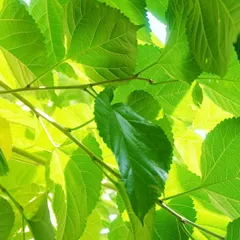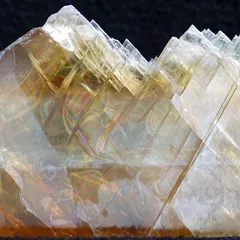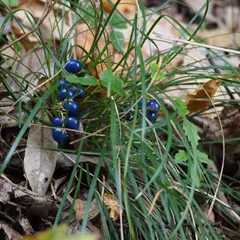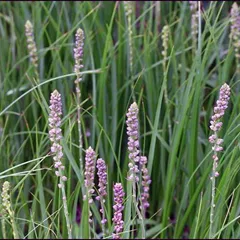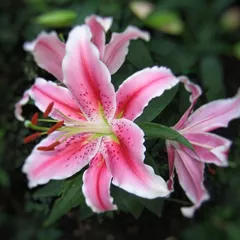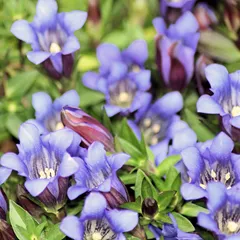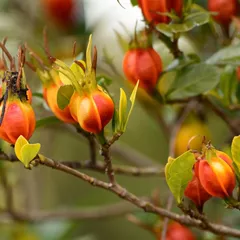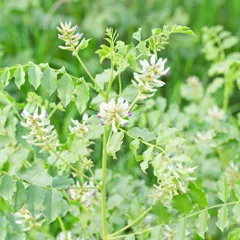Xin Yi Qing Fei Yin
Xin Yi Qing Fei Yin
Chinese: 辛夷清肺饮
Pinyin: Xīn Yí Qīng Fèi Yǐn
Other names: Magnolia Flower Drink to Clear the Lungs

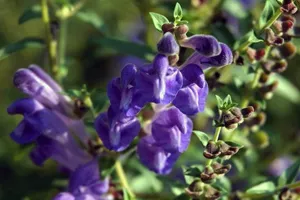
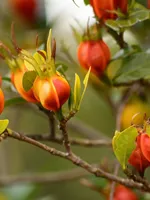
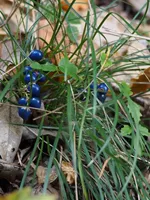




Xin Yi Qing Fei Yin
Xin Yi Qing Fei Yin
Chinese: 辛夷清肺饮
Pinyin: Xīn Yí Qīng Fèi Yǐn
Other names: Magnolia Flower Drink to Clear the Lungs
Number of ingredients: 10 herbs
Formula category: Formulas that clear Heat from the Organs
Conditions for which it may be prescribed: RhinitisSinusitisNasal polyps and four other conditions
- Spreads Lung Qi
- Clears Heat
- Unblocks the orifices (specifically the nose)
Source date: 1617
Source book: Orthodox Lineage of External Medicine
The information provided here is not a replacement for a doctor. You shouldn't use it for the purpose of self-diagnosing or self-medicating but rather so you can have a more informed discussion with a professional TCM practitioner.
Xin Yi Qing Fei Yin is a 10-ingredient Chinese Medicine formula with Biond’S Magnolia Flowers (Xin Yi Hua) as a principal ingredient.
Invented in 1617, it belongs to the category of formulas that clear Heat from the Organs. Its main actions are: 1) spreads Lung Qi and 2) clears Heat.
In Chinese Medicine health conditions are thought to arise due to "disharmonies" in the body as a system. These disharmonies are called "patterns" and the very purpose of herbal formulas is to fight them in order to restore the body's harmony.
In this case Xin Yi Qing Fei Yin is used by TCM practitioners to fight patterns like Toxic-Heat Stagnation or Toxic-Heat. From a Western Medicine standpoint, such patterns can give rise to a range of conditions such as nasal polyps, sinusitis or rhinitis for instance.
On this page, after a detailed description of each of the ten ingredients in Xin Yi Qing Fei Yin, we review the patterns and conditions that Xin Yi Qing Fei Yin helps treat.
The ten ingredients in Xin Yi Qing Fei Yin

Xin Yi Hua is a king ingredient in Xin Yi Qing Fei Yin. Like the name indicates, it means it has more power than other ingredients in the formula.
1. Biond’S Magnolia Flowers (Xin Yi Hua)
In general Xin Yi Hua's main actions are as follows: "Releases the Exterior and dispels Wind-Cold. Relieves nasal congestion."
In the context of Xin Yi Qing Fei Yin, it is used because it disperses Wind and unblocks the nose.
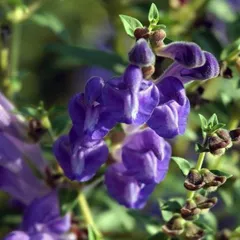
Huang Qin is a deputy ingredient in Xin Yi Qing Fei Yin. This means it helps the king ingredient(s) treat the main pattern or it serves to treat a coexisting pattern.
2. Baikal Skullcap Roots (Huang Qin)
Part used: Dried root
Nature: Cold
Taste(s): Bitter
Meridian affinity: GallbladderHeartLarge intestineLungSmall intestineSpleen
Category: Herbs that clear Heat and dry Dampness
In general Huang Qin's main actions are as follows: "Expels Heat and Dampness. Clears Upper Burner Heat, especially of the Lung. Clears Heat and stops reckless movement of Blood. Clears pathogenic Heat which is upsetting the fetus. Cools the Liver, reducing Liver Yang rising syndrome."
In the context of Xin Yi Qing Fei Yin, it is used because it clear Toxic-Heat.
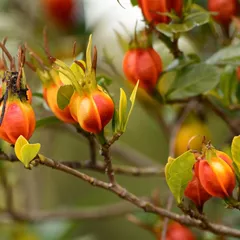
Zhi Zi is a deputy ingredient in Xin Yi Qing Fei Yin. This means it helps the king ingredient(s) treat the main pattern or it serves to treat a coexisting pattern.
3. Cape Jasmine Fruits (Zhi Zi)
Part used: Dried ripe fruit
Nature: Cold
Taste(s): Bitter
Meridian affinity: GallbladderHeartLungSanjiao
Category: Herbs that clear Heat and purge Fire and/or clear Summer Heat
In general Zhi Zi's main actions are as follows: "Clears Heat and calms spirit. Drains Damp-Heat affecting the Liver and Gallbladder. Clears Heat in the Blood and stops bleeding. Anti-inflammatory."
In the context of Xin Yi Qing Fei Yin, it is used because it clear Toxic-Heat.
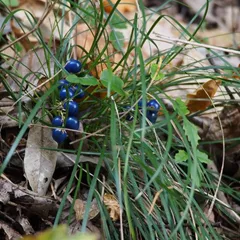
Mai Dong is a deputy ingredient in Xin Yi Qing Fei Yin. This means it helps the king ingredient(s) treat the main pattern or it serves to treat a coexisting pattern.
4. Dwarf Lilyturf Roots (Mai Dong)
Part used: Dried root tuber
Nature: Cool
Meridian affinity: HeartLungStomach
Category: Tonic herbs for Yin Deficiency
Mai Dong enhances the Yin and moisten the Lungs so as to offset damage to the Lung Yin caused by the drying herbs in the formula and the stagnant Heat inherent in this disorder. Dwarf lilyturf root and Lily bulb work together for this purpose.
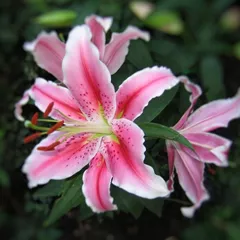
Bai He is a deputy ingredient in Xin Yi Qing Fei Yin. This means it helps the king ingredient(s) treat the main pattern or it serves to treat a coexisting pattern.
5. Lily Bulbs (Bai He)
Part used: Dried fleshly scale leaves of the bulb
Nature: Cold
Taste(s): Sweet
Category: Tonic herbs for Yin Deficiency
Bai He enhances the Yin and moisten the Lungs so as to offset damage to the Lung Yin caused by the drying herbs in the formula and the stagnant Heat inherent in this disorder. Dwarf lilyturf root and Lily bulb work together for this purpose.
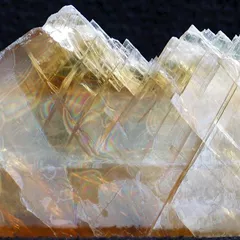
Shi Gao is a deputy ingredient in Xin Yi Qing Fei Yin. This means it helps the king ingredient(s) treat the main pattern or it serves to treat a coexisting pattern.
6. Gypsum (Shi Gao)
Part used: The mineral itself
Nature: Cold
Meridian affinity: LungStomach
Category: Herbs that clear Heat and purge Fire and/or clear Summer Heat
In general Shi Gao's main actions are as follows: "Clears Heat and drains Fire. Clears Lung Heat. Relieves thirst and restlessness. Clears Stomach Heat."
In the context of Xin Yi Qing Fei Yin, it is used because it clear Toxic-Heat.
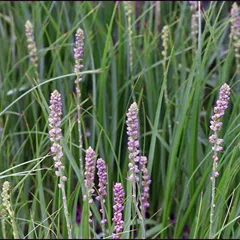
Zhi Mu is a deputy ingredient in Xin Yi Qing Fei Yin. This means it helps the king ingredient(s) treat the main pattern or it serves to treat a coexisting pattern.
7. Anemarrhena Rhizomes (Zhi Mu)
Part used: Dried rhizome
Nature: Cold
Meridian affinity: KidneyLungStomach
Category: Herbs that clear Heat and purge Fire and/or clear Summer Heat
In general Zhi Mu's main actions are as follows: "Clears Heat and Fire from the Qi level. Clears Heat and Fire from the Lung and Stomach. Clears Heat and tonifies the Yin."
In the context of Xin Yi Qing Fei Yin, it is used because it clear Toxic-Heat.
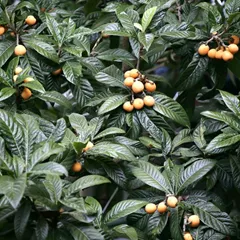
Pi Pa Ye is an assistant ingredient in Xin Yi Qing Fei Yin. This means that it either serves to reinforces the effect of other ingredients or it moderates their toxicity.
8. Loquat Leaves (Pi Pa Ye)
Part used: Dried leaves
Nature: Cool
Taste(s): Bitter
Meridian affinity: StomachLung
Category: Herbs that relieve coughing and wheezing
Pi Pa Ye clarifies and descends, thus directing the Lung Qi downward and enabling the it to spread. Loquat leaf and Bugbane rhizome works together to regulates Qi flow in the Upper bodyso that the turbid Qi descends and the clear Qi rises.
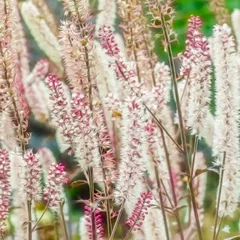
Sheng Ma is an assistant ingredient in Xin Yi Qing Fei Yin. This means that it either serves to reinforces the effect of other ingredients or it moderates their toxicity.
9. Bugbane Rhizomes (Sheng Ma)
Sheng Ma raises the clear Yang and clears Toxic-Heat. Loquat leaf and Bugbane rhizome works together to regulates Qi flow in the Upper bodyso that the turbid Qi descends and the clear Qi rises.
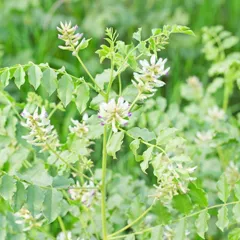
Gan Cao is an envoy ingredient in Xin Yi Qing Fei Yin. This means that it directs the formula towards certain area of the body and/or harmonizes the actions of other ingredients.
10. Liquorice (Gan Cao)
Part used: Dried root and rhizome
Nature: Neutral
Taste(s): Sweet
Meridian affinity: HeartLungSpleenStomach
Category: Tonic herbs for Qi Deficiency
In general Gan Cao's main actions are as follows: "Tonifies the Basal Qi and nourishes the Spleen Qi. Clears Heat and dispels toxicity. Moistens the Lungsexpel phlegm and stop coughing. Relieves spasms and alleviates pain. Harmonizes and moderates the effects of other herbs."
In the context of Xin Yi Qing Fei Yin, it is used because it harmonizing the formula, clearing Heat, and resolving Toxicity.
Conditions and patterns for which Xin Yi Qing Fei Yin may be prescribed
It's important to remember that herbal formulas are meant to treat patterns, not "diseases" as understood in Western Medicine. According to Chinese Medicine patterns, which are disruptions to the body as a system, are the underlying root cause for diseases and conditions.
As such Xin Yi Qing Fei Yin is used by TCM practitioners to treat two different patterns which we describe below.
But before we delve into these patterns here is an overview of the Western conditions they're commonly associated with:
Nasal polyps Sinusitis Rhinitis Atrophic rhinitis Allergic rhinitis Chronic cough Chronic bronchitis
Again it wouldn't be correct to say "Xin Yi Qing Fei Yin treats nasal polyps" for instance. Rather, Xin Yi Qing Fei Yin is used to treat patterns that are sometimes the root cause behind nasal polyps.
Now let's look at the two patterns commonly treated with Xin Yi Qing Fei Yin.

'Heat' as a body pattern in Chinese Medicine is one of the so-called "Eight Principles". Learn more about Heat pattern in Chinese Medicine
Toxic-Heat Stagnation
Pulse type(s): Rapid (Shu)
Symptoms: Fever Eczema Thirst Pustule Carbuncles Dark Urine Sore throat Throat pain Mouth ulcers Constipation Swollen tonsils Perineum swollen Prostate swollen Testicle swollen Red skin eruptions
Xin Yi Qing Fei Yin is sometimes prescribed by TCM practitioners to treat Toxic-Heat Stagnation. This pattern leads to symptoms such as pustule, carbuncles, fever and red skin eruptions. Patients with Toxic-Heat Stagnation typically exhibit rapid (Shu) pulses.
This pattern can be chronic and causes by accumulated Heat or Fire in the body, which become Toxin eventually. It can also be caused by external Pernicious Influences which combat with the Defensive Qi and it gives rise to symptoms like fever and redness. This Toxic-Heat also consumes Body Fluids... read more about Toxic-Heat Stagnation

'Heat' as a body pattern in Chinese Medicine is one of the so-called "Eight Principles". Learn more about Heat pattern in Chinese Medicine
Toxic-Heat
Pulse type(s): Rapid (Shu)
Tongue coating: Yellow coating
Tongue color: Red
Symptoms: Pus Fever Boils Sores Eczema Thirst Pustule Coughing Erythema Swellings Carbuncles Dark Urine Sore throat Mouth ulcers Constipation Abdominal pain Swollen tonsils Feeling of heat Lower back pain Perineum swollen Prostate swollen Testicle swollen Red skin eruptions Shortness of breath Yellow vaginal discharge Smelly Vaginal discharge Sticky vaginal discharge Bloody vaginal discharge Five colour vaginal discharge
Xin Yi Qing Fei Yin is sometimes prescribed by TCM practitioners to treat Toxic-Heat. This pattern leads to symptoms such as fever, swellings, pus and boils. Patients with Toxic-Heat typically exhibit rapid (Shu) pulses as well as Red tongue with yellow coating.
There are two types of Toxic-Heat. One type is called Toxic-Heat Stagnation, which mainly happens in Channels or other surfaces like skins, throat, lymph or mouth. The symptoms include pain, redness and swollen in throat as well as skin pustule and rush. Acne during teenage time is mainly due to... read more about Toxic-Heat
Formulas similar to Xin Yi Qing Fei Yin
Qing Zao Jiu Fei Tang is 40% similar to Xin Yi Qing Fei Yin
Qing Wen Bai Du Yin is 36% similar to Xin Yi Qing Fei Yin
Bai He Gu Jin Tang is 30% similar to Xin Yi Qing Fei Yin
Long Dan Xie Gan Tang is 30% similar to Xin Yi Qing Fei Yin
Yu Nu Jian is 30% similar to Xin Yi Qing Fei Yin
Bai Hu Tang is 30% similar to Xin Yi Qing Fei Yin

